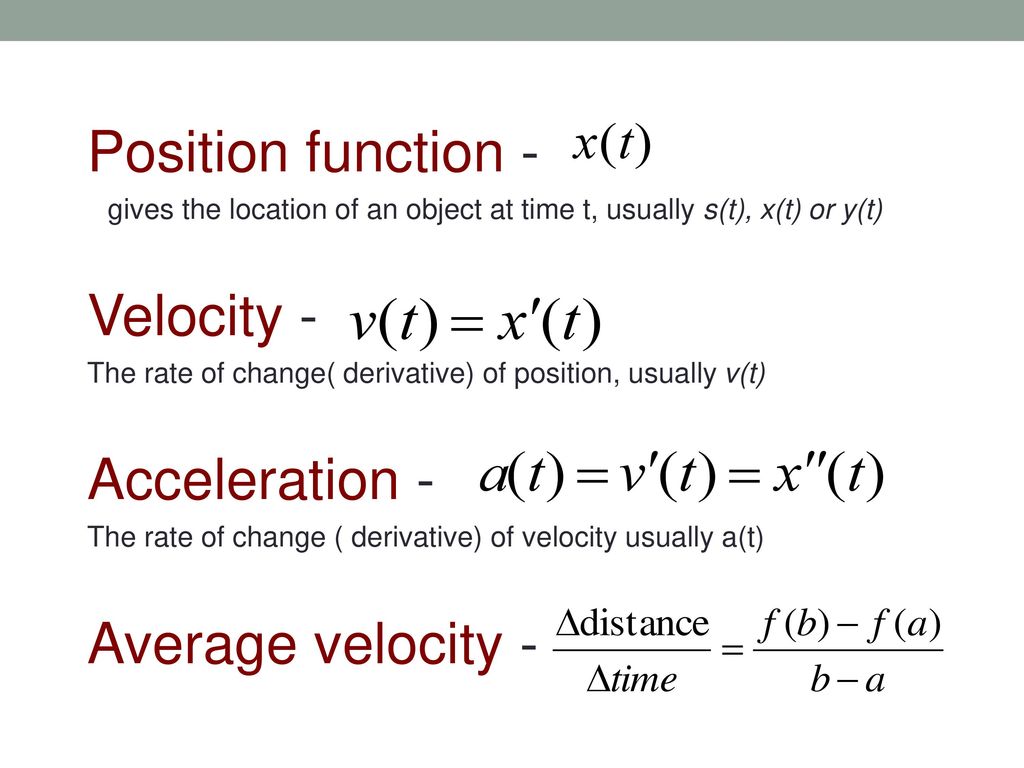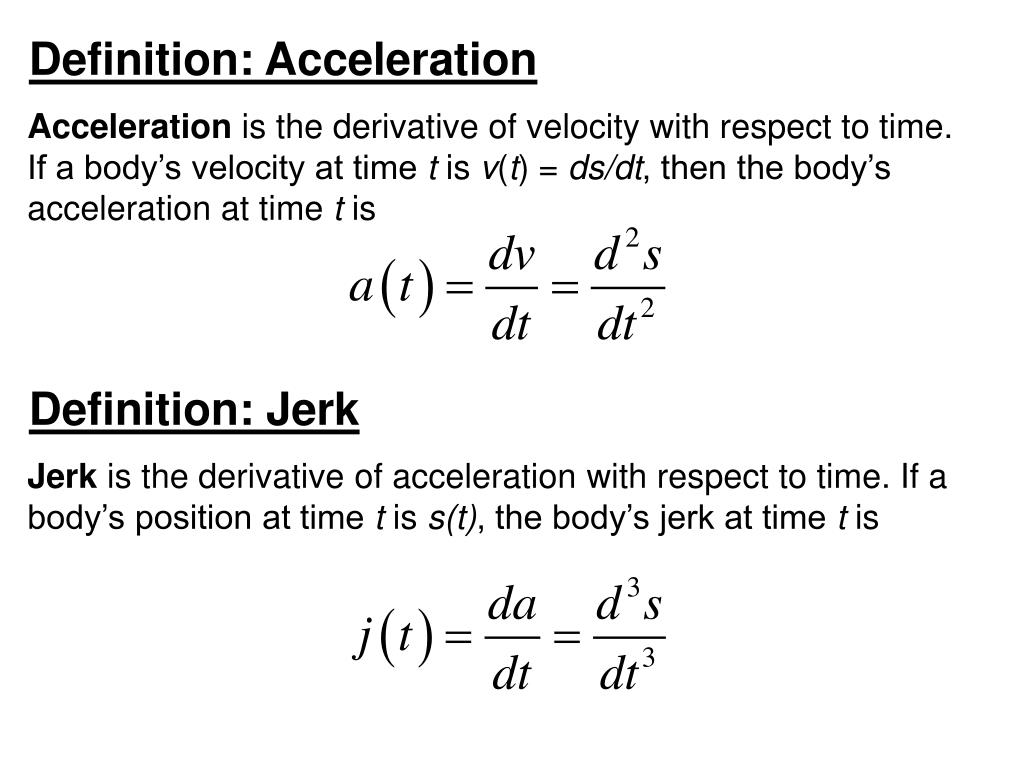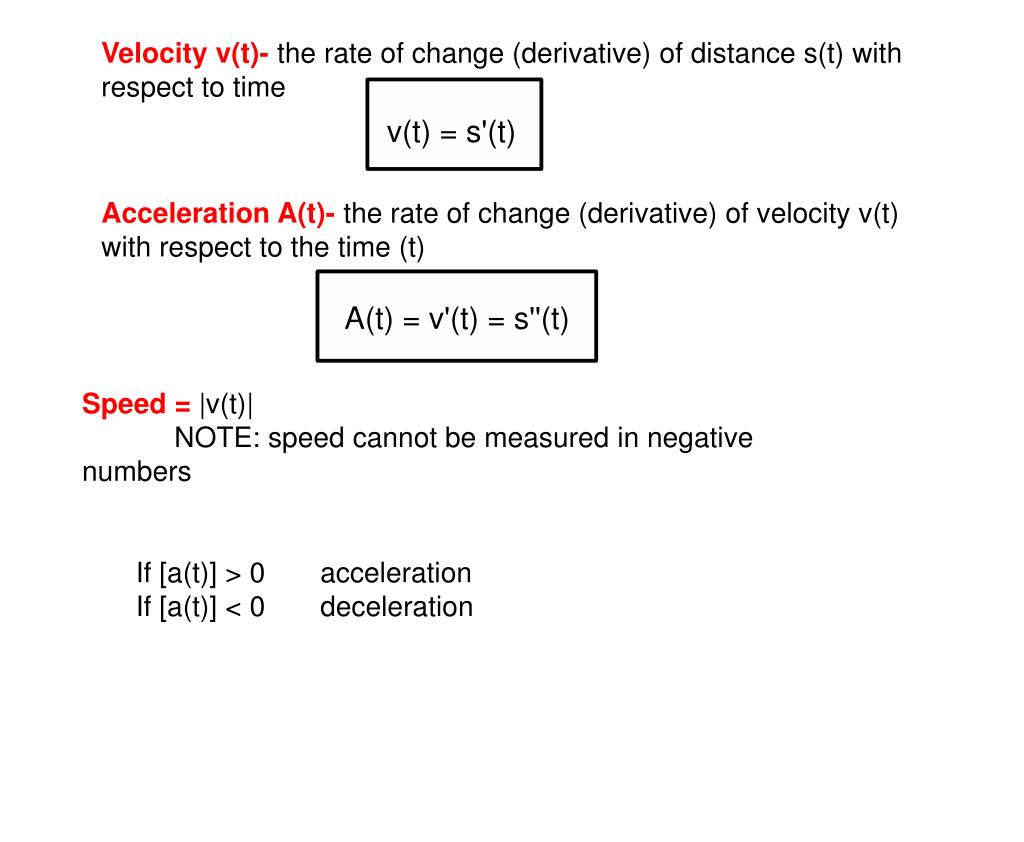Derivative Of Acceleration With Respect To Time

A previously obscure concept, the derivative of acceleration with respect to time, commonly known as jerk, is now under intense scrutiny following a series of high-profile engineering failures. Experts are urgently re-evaluating design standards and safety protocols, pushing for broader integration of jerk analysis to prevent future incidents.
This sudden focus on jerk stems from growing evidence linking it to structural failures and compromised system stability across various industries, compelling a rapid reassessment of engineering methodologies. Ignoring this concept could have catastrophic consequences.
The Rising Concern: Jerk's Impact
Jerk, or the rate of change of acceleration, is now implicated in several recent catastrophic incidents. These include, but are not limited to, bridge collapses, aircraft malfunctions, and robotic system failures.
Civil engineering is grappling with findings suggesting that rapid changes in acceleration during seismic events, previously overlooked, significantly contribute to structural stress. This is particularly relevant for bridges and high-rise buildings.
Aerospace Implications
In the aerospace sector, investigations into recent turbulence-related incidents are highlighting the role of jerk in causing passenger injuries and even structural damage to aircraft. High jerk values during sudden altitude changes can exceed safety thresholds.
Flight control systems are being redesigned to actively dampen jerk, reducing stress on airframes and improving passenger comfort. This requires a deeper understanding of atmospheric conditions and aircraft dynamics.
Robotics and Automation
The manufacturing and automation industries are also affected. Rapid acceleration and deceleration in robotic arms can cause premature wear and tear, leading to malfunctions and production delays.
Controlling jerk in robotic systems is crucial for maintaining precision and extending the lifespan of equipment. New algorithms are being developed to smooth out movements and minimize stress.
Confirmed Cases and Ongoing Investigations
The National Transportation Safety Board (NTSB) has officially cited high jerk values as a contributing factor in the partial collapse of the I-35W bridge in Minneapolis in 2007. The impact of heavy vehicles and construction combined with the bridge's design resulted in extreme acceleration changes.
Ongoing investigations into a recent string of robotic arm malfunctions at a major automotive factory have revealed that excessive jerk caused by improperly calibrated control systems led to multiple component failures.
A confidential report leaked from a leading aerospace manufacturer indicates that excessive jerk during a test flight of a new aircraft model resulted in hairline fractures in the wing structure.
The Science Behind the Concern
Jerk is a vector quantity, meaning it has both magnitude and direction. Large magnitudes and/or abrupt changes in direction can generate significant forces and stresses.
Ignoring jerk in engineering calculations can lead to underestimation of the dynamic loads placed on structures and systems. This can result in designs that are unsafe under real-world conditions.
Mathematical models and simulations are now being refined to incorporate jerk as a critical parameter. This will enable engineers to design systems that are more robust and resilient.
The Path Forward
Professional engineering organizations are revising design codes and standards to explicitly address the effects of jerk. This includes recommending specific limits on jerk values for various applications.
Educational institutions are integrating jerk analysis into engineering curricula to ensure that future engineers are aware of its importance. This knowledge is crucial for avoiding future disasters.
Further research is underway to develop advanced sensors and monitoring systems that can accurately measure jerk in real-time. This data will be invaluable for assessing the health and performance of critical infrastructure.
The renewed focus on jerk signifies a paradigm shift in engineering practices. This shift is driven by the urgent need to prevent future failures and ensure the safety and reliability of engineered systems.


+of+the+object..jpg)





..jpg)








.jpg)
